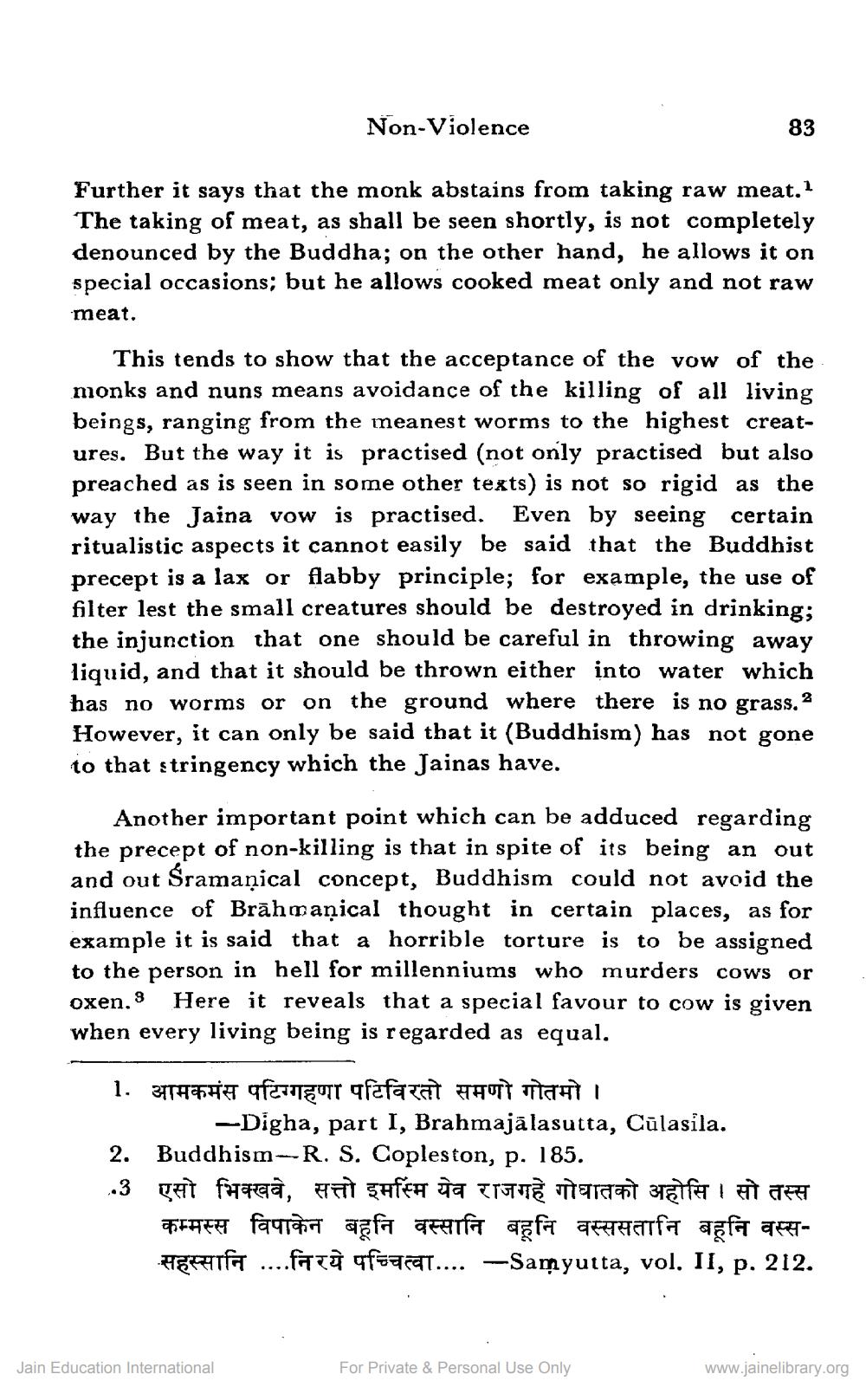________________
Non-Violence
83
Further it says that the monk abstains from taking raw meat.1 The taking of meat, as shall be seen shortly, is not completely denounced by the Buddha; on the other hand, he allows it on special occasions; but he allows cooked meat only and not raw meat.
This tends to show that the acceptance of the vow of the monks and nuns means avoidance of the killing of all living beings, ranging from the meanest worms to the highest creatures. But the way it is practised (not only practised but also preached as is seen in some other texts) is not so rigid as the way the Jaina vow is practised. Even by seeing certain ritualistic aspects it cannot easily be said that the Buddhist precept is a lax or flabby principle; for example, the use of filter lest the small creatures should be destroyed in drinking; the injunction that one should be careful in throwing away liquid, and that it should be thrown either into water which has no worms or on the ground where there is no grass. 2 However, it can only be said that it (Buddhism) has not gone to that stringency which the Jainas have.
Another important point which can be adduced regarding the precept of non-killing is that in spite of its being an out and out Śramaņical concept, Buddhism could not avoid the influence of Brāhmaṇical thought in certain places, as for example it is said that a horrible torture is to be assigned to the person in hell for millenniums who murders cows or oxen. 3 Here it reveals that a special favour to cow is given when every living being is regarded as equal.
1. आमकमंस पटिग्गहणा पटिविरतो समणो गोतमो ।
-Digha, part I, Brahmajālasutta, Cūlasila. 2. Buddhism-R. S. Copleston, p. 185.
एसो भिक्खवे, सत्तो इमस्मि येव राजगहे गोघातको अहोसि । सो तस्स कम्मस्स विपाकेन बहूनि वस्सानि बहूनि वस्ससतानि बहूनि वस्सHEFTIGT ....fath qfSeaT.... -Samyutta, vol. II, p. 212.
Jain Education International
For Private & Personal Use Only
www.jainelibrary.org




